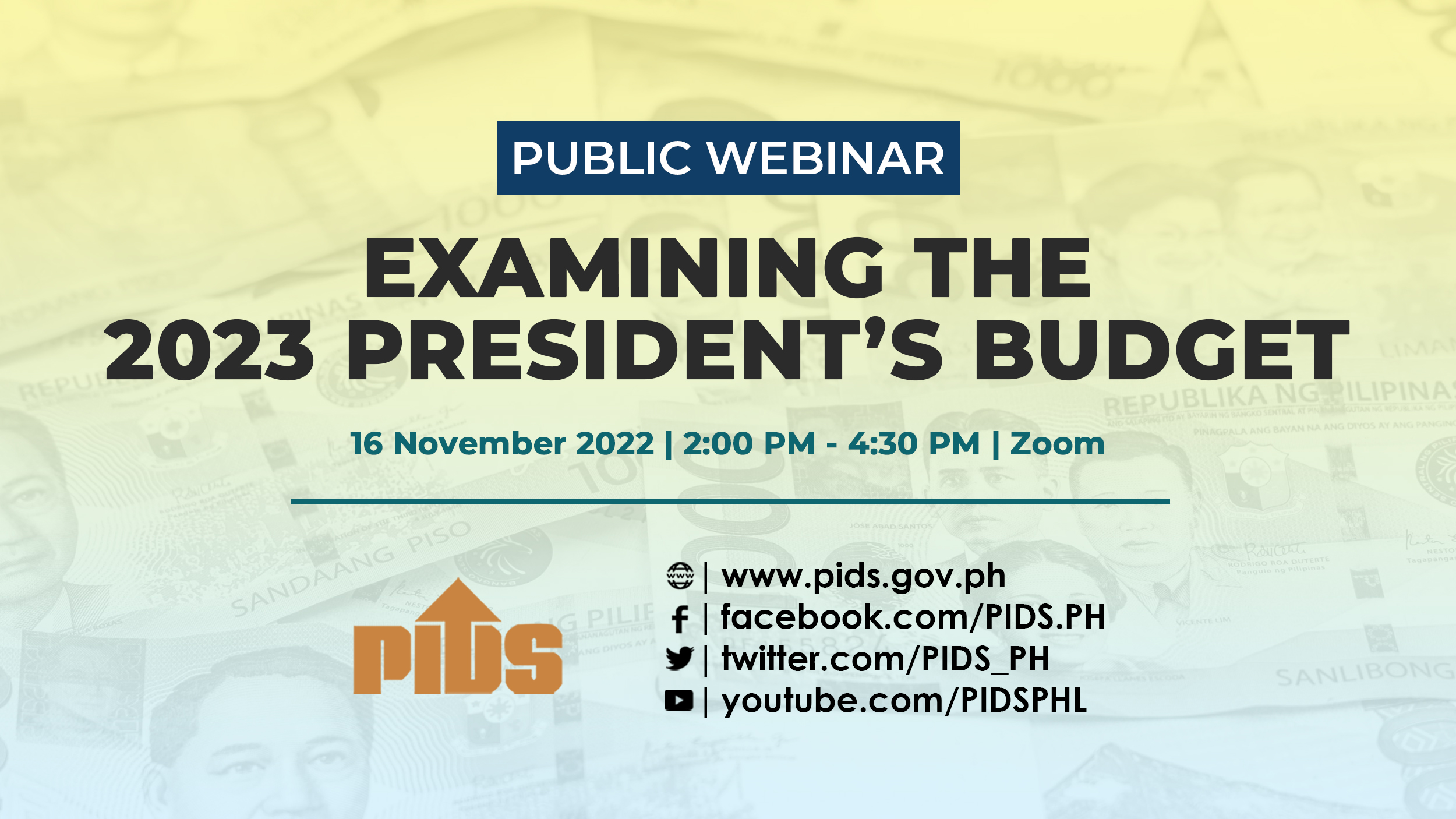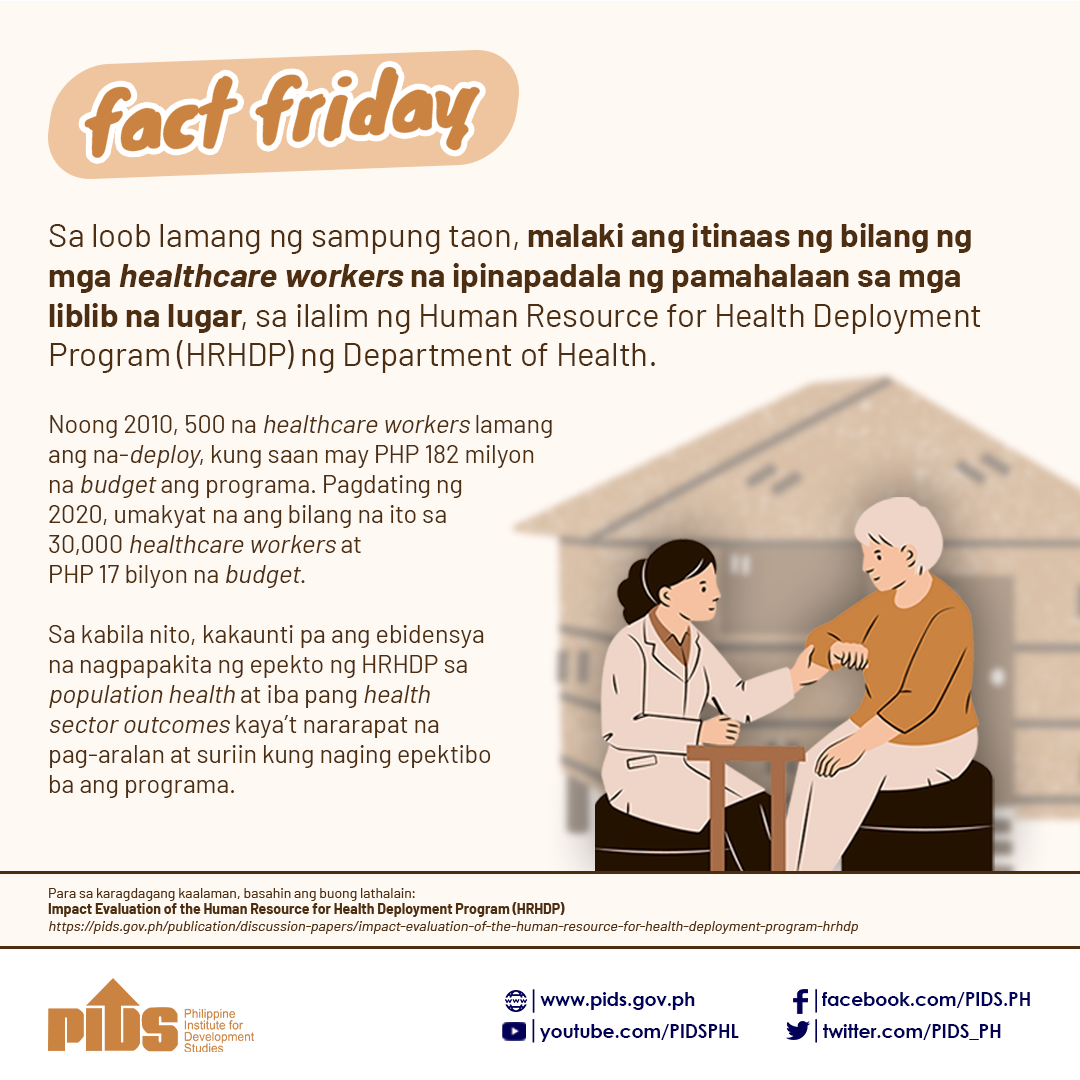MANILA, Philippines – State think tank Philippine Institute for Development Studies (PIDS) is urging the Department of Education (DepEd) to improve the documentation and review the targets of its School-Based Feeding Program to enable the government to have a proper basis for determining program beneficiaries in succeeding years.
In an impact evaluation study, PIDS consultant Ana Maria Tabunda said there are inaccuracies in the documentation of the date of activities and the nutrition profiles – age, weight and height – of the beneficiaries.
The errors produce results such as lower post-feeding height and weight among beneficiaries.
Inaccurate data affect program evaluation
“These inaccurate data in school documents and those obtained during the survey by PIDS researchers constrain proper assessment not only of the initial nutrition status of would-be program beneficiaries but also the improvement in such status,” Tabunda said.
She recommends that all schools, including non-beneficiary schools, be provided with weighing scales and height measurement equipment.
“All schools need to be provided with these equipment since non-beneficiary schools also need to submit accurate nutrition status reports which serve as the basis for determining which schools should implement the feeding program,” Tabunda said.
The training for school heads, nurses and teachers on the use of equipment and instruction on proper documentation will help in the proper selection of beneficiary schools and in the monitoring and evaluation of the program.
“Although the goal of having at least 70 percent of the beneficiaries attain normal nutrition status by the end of the feeding program may have not been attained in school year 2013 to 2014, these are caused by problems beyond the control of the program implementers,” she said.
Program evolution
DepEd’s feeding program was first offered as the Breakfast Feeding Program in 1997 to address short-term hunger among public school children.
It eventually shifted focus to addressing undernutrition or malnutrition after school year 2008 to 2009.
In 2012, it was renamed School-Based Feeding Program as feeding time was no longer limited to breakfast.
For school year 2014 to 2015, the national government targeted all the 562,262 severely wasted children enrolled in kindergarten to Grade 6 in public schools for inclusion in the program – about 3.8 percent of 14.9 million children enrolled in public schools.
The program provides food to severely wasted children, or those whose weight-for-height measurements are below the minus-three standard deviation cut-off established by the World Health Organization for well-nourished populations.
It is conducted in schools over a period of 100 to 120 feeding days for a given batch of program beneficiaries.
School attendance improved
Tabunda said despite the glitches, the feeding program was implemented well, with a majority of the implementers and beneficiaries expressing a desire to see the program continued and if possible expanded.
The study noted that the program’s goal of improving school attendance among beneficiaries to at least 85 percent for the current school year had been attained.
However, children who are not beneficiaries also have good school attendance records. As such, the feeding program appears to help improve attentiveness in class and sociability of beneficiary students.
For the impact evaluation study, PIDS surveyed seven percent of the total number of severely wasted pupils in elementary schools for academic year 2013 to 2014. It aims to assess the outcomes and impact of the feeding program in terms of its educational and nutritional objectives.
In an impact evaluation study, PIDS consultant Ana Maria Tabunda said there are inaccuracies in the documentation of the date of activities and the nutrition profiles – age, weight and height – of the beneficiaries.
The errors produce results such as lower post-feeding height and weight among beneficiaries.
Inaccurate data affect program evaluation
“These inaccurate data in school documents and those obtained during the survey by PIDS researchers constrain proper assessment not only of the initial nutrition status of would-be program beneficiaries but also the improvement in such status,” Tabunda said.
She recommends that all schools, including non-beneficiary schools, be provided with weighing scales and height measurement equipment.
“All schools need to be provided with these equipment since non-beneficiary schools also need to submit accurate nutrition status reports which serve as the basis for determining which schools should implement the feeding program,” Tabunda said.
The training for school heads, nurses and teachers on the use of equipment and instruction on proper documentation will help in the proper selection of beneficiary schools and in the monitoring and evaluation of the program.
“Although the goal of having at least 70 percent of the beneficiaries attain normal nutrition status by the end of the feeding program may have not been attained in school year 2013 to 2014, these are caused by problems beyond the control of the program implementers,” she said.
Program evolution
DepEd’s feeding program was first offered as the Breakfast Feeding Program in 1997 to address short-term hunger among public school children.
It eventually shifted focus to addressing undernutrition or malnutrition after school year 2008 to 2009.
In 2012, it was renamed School-Based Feeding Program as feeding time was no longer limited to breakfast.
For school year 2014 to 2015, the national government targeted all the 562,262 severely wasted children enrolled in kindergarten to Grade 6 in public schools for inclusion in the program – about 3.8 percent of 14.9 million children enrolled in public schools.
The program provides food to severely wasted children, or those whose weight-for-height measurements are below the minus-three standard deviation cut-off established by the World Health Organization for well-nourished populations.
It is conducted in schools over a period of 100 to 120 feeding days for a given batch of program beneficiaries.
School attendance improved
Tabunda said despite the glitches, the feeding program was implemented well, with a majority of the implementers and beneficiaries expressing a desire to see the program continued and if possible expanded.
The study noted that the program’s goal of improving school attendance among beneficiaries to at least 85 percent for the current school year had been attained.
However, children who are not beneficiaries also have good school attendance records. As such, the feeding program appears to help improve attentiveness in class and sociability of beneficiary students.
For the impact evaluation study, PIDS surveyed seven percent of the total number of severely wasted pupils in elementary schools for academic year 2013 to 2014. It aims to assess the outcomes and impact of the feeding program in terms of its educational and nutritional objectives.











